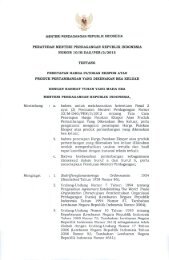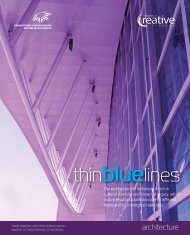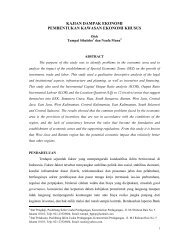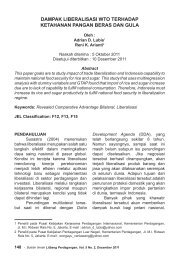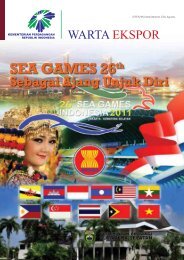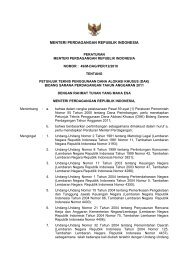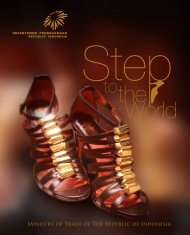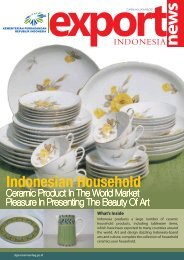Indonesia
Indonesia
Indonesia
Create successful ePaper yourself
Turn your PDF publications into a flip-book with our unique Google optimized e-Paper software.
N-250 Cockpit<br />
The N-250 was launched at the 38th Paris Air<br />
Show in 1989, following a market evaluation<br />
that began in 1987. That study resulted in a<br />
decision in 1989 to proceed with development of<br />
the N-50. The first metal for the initial prototype<br />
was cut in August 1992. First flight of the initial<br />
N-250 prototype was in August 1995. This first<br />
flight of the initial prototype, a 50-seater, and the<br />
second N-250 prototype made its initial flight<br />
in December 1996. It was built in the stretched<br />
N-250-100 configuration.<br />
The N250 turboprop carrier was the pride of <strong>Indonesia</strong>. Its maiden flight exactly a<br />
week before the 50th anniversary of <strong>Indonesia</strong>’s declaration of independence from<br />
the Dutch, The first flight of the N-250 turboprop was in August 10 1997. It is the<br />
first commercial aircraft designed and made completely by <strong>Indonesia</strong>n engineers<br />
and technicians. The plane’s designer, state-owned IPTN Industri Pesawat Terbang<br />
Nusantara (<strong>Indonesia</strong>), wanted to market the 64-68 seat aircraft worldwide.<br />
The airframe was fabricated from aircraft light alloys and titanium with a significant<br />
portion of nonstructural components of composite materials. The fuselage was<br />
derived from that of the CN-235, although it was wider and taller. The wing, tail,<br />
and engine nacelles were all-new designs. The wing included double-slotted fixed<br />
vane flaps and wing spoilers for STOL enhancement. Standard avionics equipment<br />
included the Rockwell Collins Pro Line 4 avionics system. This system featured five<br />
large CRT displays that provide primary flight, navigation, engine, and aircraft status<br />
information. Fly-by-wire technology was used for the primary and secondary flight<br />
control systems.<br />
CREATIVE & INNOVATION INDONESIA<br />
17<br />
produk rev akhir.indd 17<br />
4/7/2009 6:11:19 PM



